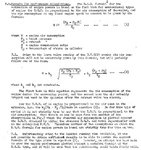wuzak
Captain
As soon as multiple smaller impellers started to be used the efficiency went up. This resulted in less intake air heating (more hp!) as well as less parasitic power loss (more hp!) from the s/c at a given boost. It also allowed for greater absolute compression ratios as altitude went ever higher (more hp at 30k ft). Not to mention that there is always "some" loss of efficiency in such a fluid-coupled system.
Single stage superchargers were more efficient for lower pressure ratios (ie lower boost). IIRC Rolls Royce figured that the change-over happened around a PR of 3.5:1.
Note that boost depended on pressure ratio and inlet pressure (altitude). For a given boost a higher pressure ratio is required for a higher altitude.

